Majengo slum residents turn to wood waste in quest for cheap cooking fuel
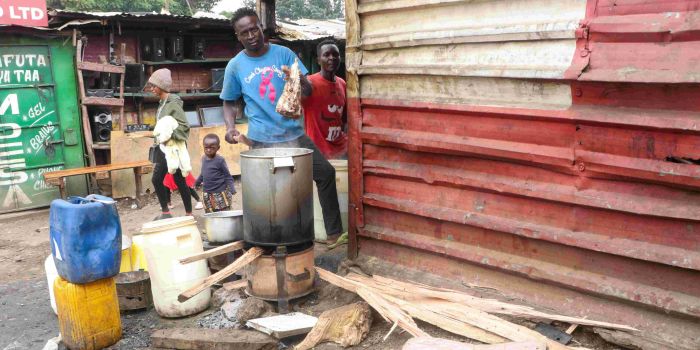
They are using waste wood from the Nairobi Handicraft Cooperative Society as it is cheap and readily available.
The use of wood fuel is uncommon in urban areas such as Nairobi, where trees are not plentiful, but even under this circumstance, some people in the Majengo slum are taking a different approach.
They are using waste wood from the Nairobi Handicraft Cooperative Society (NHCS), located in the Kitui village of Kamukunji Constituency, as an alternative fuel source.
More To Read
- Fire guts several houses at Kanuku informal settlement in Kamukunji’s California Ward
- Planned gas price controls draw mixed reactions from dealers
- Creativity in crisis: Kitui village artisans fight to save Nairobi’s craft heritage after market fire
- Kitui Village residents urge urgent action as rains delay ongoing road construction
- Nairobi slum dwellers' daily struggles against diseases, poor sanitation
- From kitchen to workshop: How craftsmen are revolutionising sculpture polishing using gas cylinders
While some residents use it to cook at home, the majority are business owners, who say it has saved them plenty of money and gone a long way in keeping their doors open.
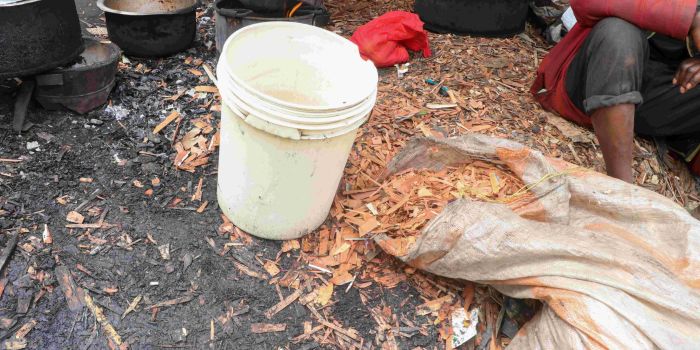 Wood waste from the Nairobi Handicraft Cooperative Society (NHCS) is pictured on June 3, 2024 outside business premises in the Kitui Village of Kamukunji Constituency, Nairobi. (Photo: Justine Ondieki/EV)
Wood waste from the Nairobi Handicraft Cooperative Society (NHCS) is pictured on June 3, 2024 outside business premises in the Kitui Village of Kamukunji Constituency, Nairobi. (Photo: Justine Ondieki/EV)
Readily available
Samuel Mueni, a resident of Majengo who owns a hotel, says he has been relying on readily available wood remnants from the NCHS, which has been supplying them to different parties for five decades.
"We use the wood for roasting and preparing broth for our customers. The leftovers are very cheap and in constant supply, which has greatly boosted our business because using other alternatives like gas or charcoal is expensive," he says, adding they buy sackfuls and affordability is a key factor.
The prices, usually between Sh100 and Sh200, depend on the category and size of the wood. Some sacks, however, cost as little as Sh50.
“If I had to rely on resources like charcoal or electricity, I probably would have shut down the business due to high operation costs."
Margaret Ndegwa, another resident of Majengo, appreciates the sustainable solution the wood waste provides, as it is readily available and affordable.
“Initially, our hotel relied on charcoal for various operations, including cooking and heating. However, as time went by, we noticed that the cost of charcoal was rising significantly. This increase in expenses started to affect our profitability, making it harder for us to sustain our business,” she says.
“Using these leftovers has allowed us to make a small profit, which helps sustain our families and care for our children. We don’t worry about sourcing them since they’re readily available within our community. I have a supplier who works there and brings them to me at a low cost.”
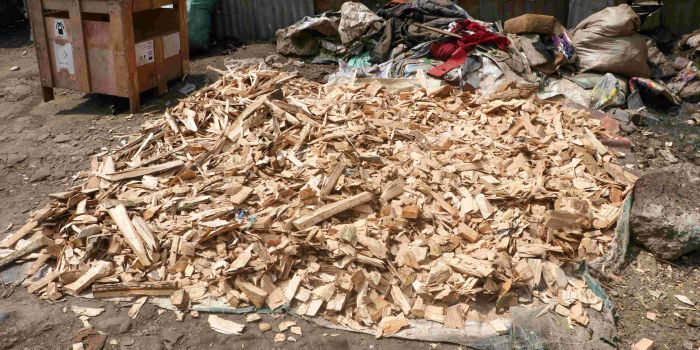 Wood waste from the Nairobi Handicraft Cooperative Society (NHCS) is pictured on June 3, 2024 outside business premises in the Kitui Village of Kamukunji Constituency, Nairobi. (Photo: Justine Ondieki/EV)
Wood waste from the Nairobi Handicraft Cooperative Society (NHCS) is pictured on June 3, 2024 outside business premises in the Kitui Village of Kamukunji Constituency, Nairobi. (Photo: Justine Ondieki/EV)
Affordability is key
The innovative use of handicraft waste not only supports the local economy but also offers a cost-effective and eco-friendly fuel alternative for the community.
NHCS Chairperson David Kilonzo said they strive to recycle everything, selling unwanted parts to the community for use as fuel.
“When we extract the parts needed for carving, there are usually remnants that we don’t need and won’t use. These particular pieces are packed in bags and sold locally to the community and schools that prefer to use them as fuel," Kilonzo explains.
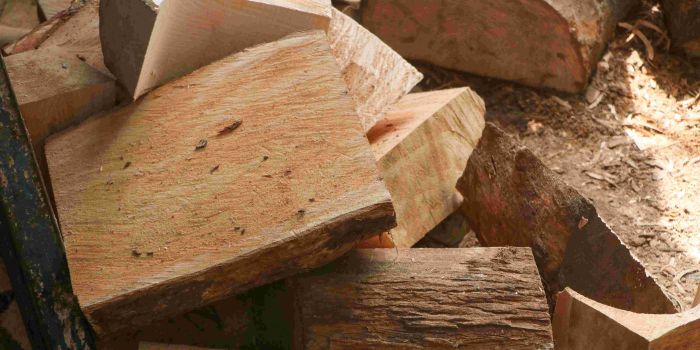 Wood waste is pictured at the Nairobi Handicraft Cooperative Society (NHCS) in the Kitui Village of Kamukunji Constituency, Nairobi, on June 3, 2024. (Photo: Justine Ondieki/EV)
Wood waste is pictured at the Nairobi Handicraft Cooperative Society (NHCS) in the Kitui Village of Kamukunji Constituency, Nairobi, on June 3, 2024. (Photo: Justine Ondieki/EV)
There are different categories of wood waste, from very small pieces to larger ones, and buyers come from all over to purchase them.
"Our main challenge is the lack of a stable power supply. If we could access stable power, we could produce our own alternative fuel from the waste, achieving 100 per cent recycling," Kilonzo says.
The chair further explained that waste materials come in various forms, from large pieces that can be used as fuel to very small particles like sawdust, which are useful to farmers.
"We sell these affordably because, to us, they're simply waste.”
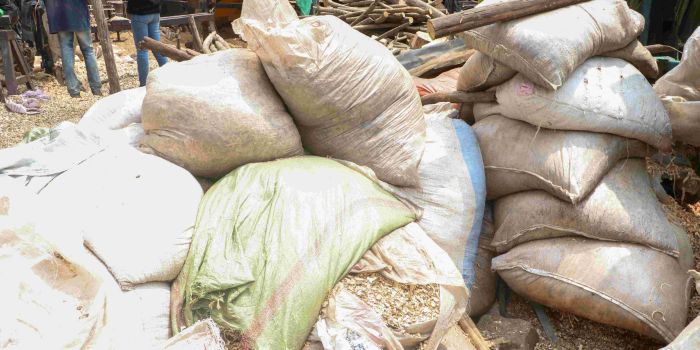 Wood waste is pictured at the Nairobi Handicraft Cooperative Society (NHCS) in the Kitui Village of Kamukunji Constituency, Nairobi, on June 3, 2024. (Photo: Justine Ondieki/EV)
Wood waste is pictured at the Nairobi Handicraft Cooperative Society (NHCS) in the Kitui Village of Kamukunji Constituency, Nairobi, on June 3, 2024. (Photo: Justine Ondieki/EV)
High cost of living
Kenya's rising cost of living has compelled numerous individuals, especially those living in slums and surviving on minimal income, to explore alternative means of survival. The increasing prices of alternative fuels, such as gas and electricity, further burden people in these areas.
In Nairobi, the retail price of a 6-kg gas cylinder refill ranges from Sh1100 to Sh1300, depending on the brand and the place of purchase. Meanwhile, a bucket of charcoal sells for Sh70 to Sh100.
The majority of people living in slums are unemployed, relying heavily on manual labour to sustain themselves
The 2019 population census reveals that about 19.5 million people in Kenya live below the poverty line, with 1.3 million in peri-urban areas and 4.2 million in core urban areas. Approximately 60 per cent of these individuals reside in slums and informal settlements.
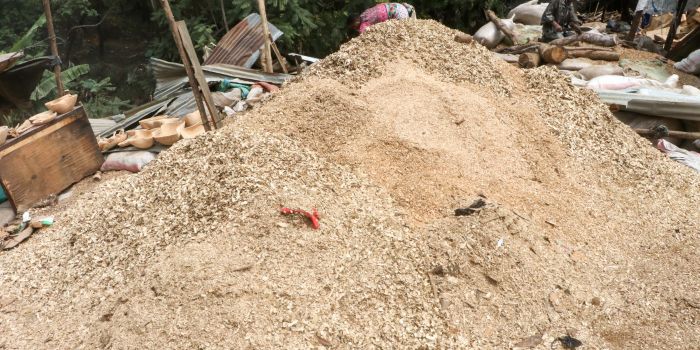 Wood waste is pictured at the Nairobi Handicraft Cooperative Society (NHCS) in the Kitui Village of Kamukunji Constituency, Nairobi, on June 3, 2024. (Photo: Justine Ondieki/EV)
Wood waste is pictured at the Nairobi Handicraft Cooperative Society (NHCS) in the Kitui Village of Kamukunji Constituency, Nairobi, on June 3, 2024. (Photo: Justine Ondieki/EV)
Urbanisation trends indicate that by 2030, half of Kenya's population will live in urban areas.
In the past decade, rapid urban growth has significantly increased the number of urban poor, both in absolute numbers and as a proportion of the population living in informal settlements nationwide.
These areas are characterised by inadequate housing, overcrowding, poor infrastructure, limited access to social amenities, insufficient water and sanitation services, poor health conditions, and high crime rates.
The current global crisis worsens existing inequalities in access to essential services, especially water, further exacerbating the socio-economic situation.
Top Stories Today











































